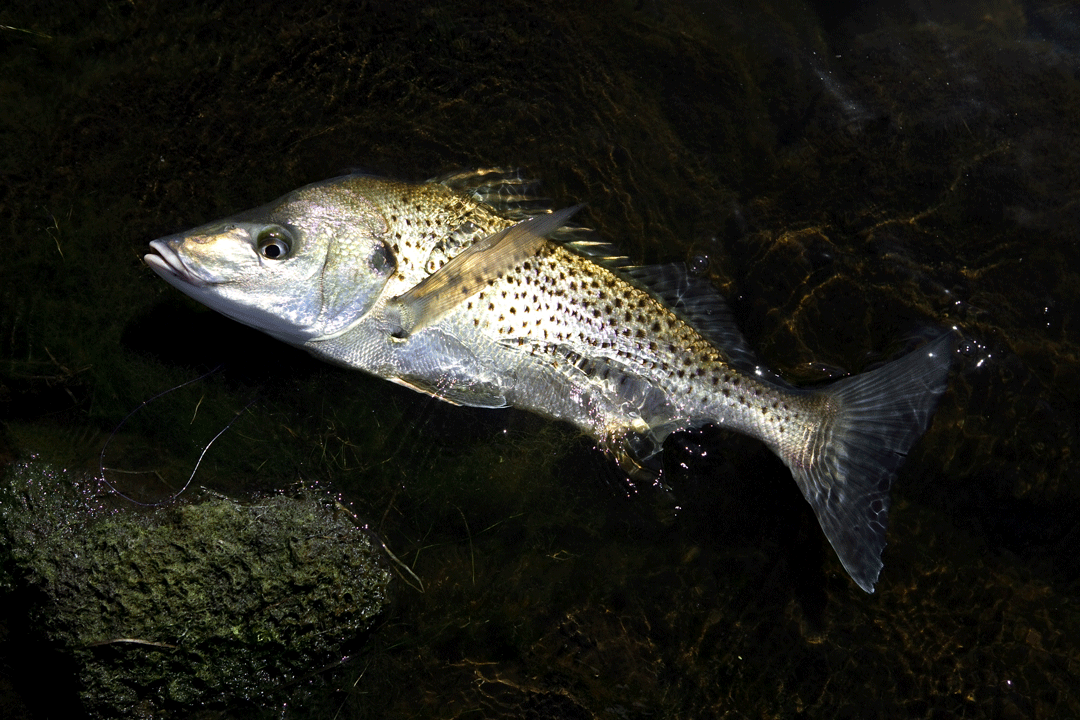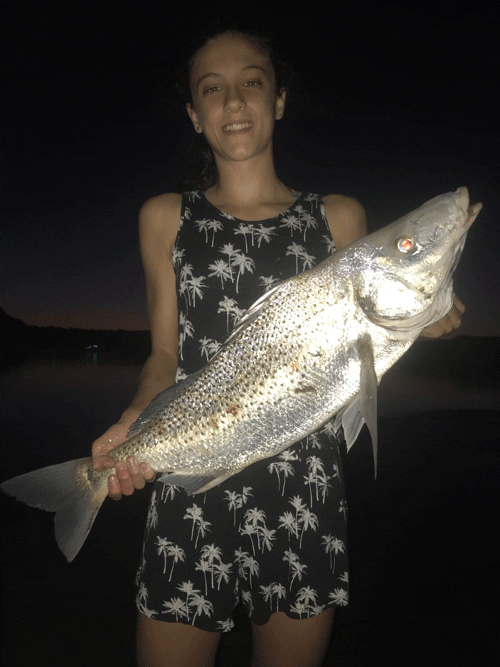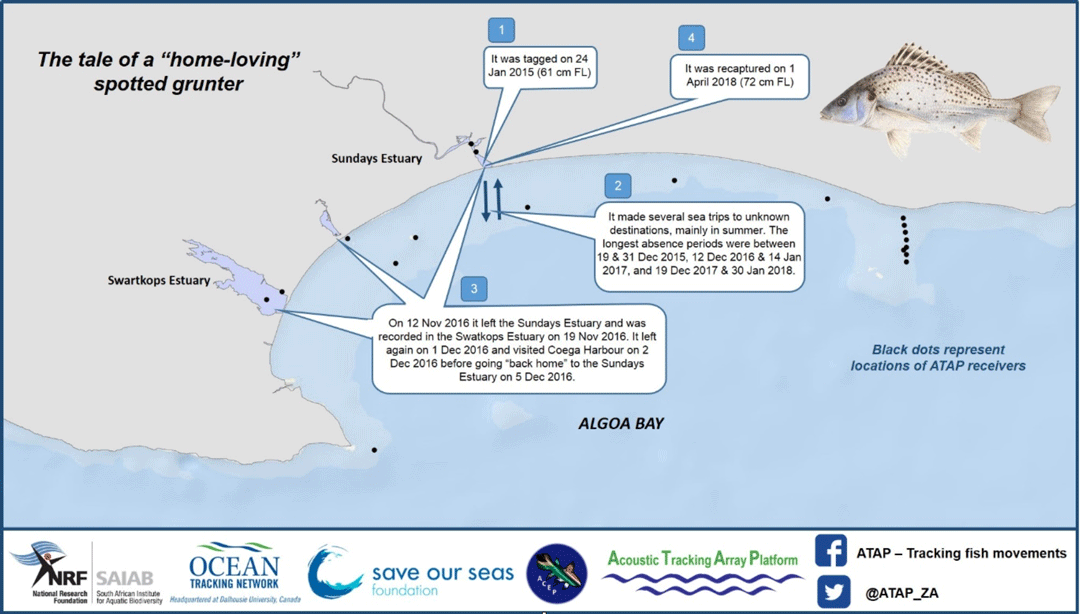The tale of a ‘home-loving’ spotted grunter
Researchers from the South African Institute for Aquatic Biodiversity (SAIAB) have been studying the movement behaviour of spotted grunter since 2004, with more than 120 individuals having been tagged with acoustic transmitters to date. The research initially focussed on juveniles in a single estuary and later the movements between neighbouring estuaries (habitat connectivity). Currently, the focus is on longshore movements and stock segregation of adults.

Photo © Mark Atkins
Dart tagging data from the Oceanographic Research Institute’s Cooperative Fish Tagging Project revealed that 95% of all recaptures made were within 3.5 km of the release site, with only 2% moving more than 100 km (Cowley et al. 2012). The findings of earlier acoustic telemetry studies confirmed this residency behaviour, with juvenile individuals occupying relatively small home ranges in both permanently open and intermittently open estuaries (Childs et al. 2008, Maree et al. 2016). With the recent tagging of many more adult spotted grunter, we are beginning to gain a much better understanding of the movement behaviour and estuarine-dependency of this species throughout its life history.
One such example includes a truly “home-loving” spotted grunter that was acoustically tagged in the Sundays Estuary on 24 January 2015 (61 cm fork length (FL); approximately 4.3 kg) and was recaptured in the same estuary 38 months later on 01 April 2018 (72 cm FL; approximately 6.7 kg). Throughout those 38 months, the fish rarely left the estuary, making the occasional trip to sea. Of all those sea trips, only two were longer than 30 days. Even though it was never detected by one of the sea receivers in Algoa Bay, this grunter was recorded visiting the neighbouring Swartkops Estuary and Coega Harbour during one excursion. It left the Sundays Estuary on 12 November 2016 (18h15) and was recorded in the Swartkops Estuary on 19 November 2016 (14h00). It remained in the estuary for a number of days before leaving on 01 December 2016 (15h00). It was briefly recorded in the Coega Harbour on 02 December 2016 (around 14h00) and on 05 December 2016 it ventured back “home” to the Sundays Estuary.

Miss Schmelzer with her spotted grunter recapture. Photo © SAIAB | ATAP
Interestingly, over each Christmas period since tagging, this spotted grunter was recorded leaving the estuary (i.e. went to sea). It was absent from 19 to 31 December 2015, 12 December 2016 to 14 January 2017 and again from 19 December to 30 January 2018. Boat noise has been found to disturb fish (Jacobsen et al. 2014) so perhaps increased boating activity during the holiday season could account for the sea trips made by this spotted grunter. Another possibility is that it went to sea to spawn. Similar observations of philopatry (home-loving) with marine excursions predominantly taking place during summer months have also been recorded for adult spotted grunter tagged in other estuaries.
Spotted grunter is an important recreational and subsistence fishery species, with no allowable commercial exploitation. Given the high levels of estuarine dependency, along with extensive fishing pressure within these habitats, this species in now considered to be over-exploited. Spotted grunter are managed by catch restrictions in the form of minimum size (40 cm total length) and daily bag (5 fish per person per day) limits. A detailed fishery survey conducted on the Sundays Estuary (Cowley et al. 2013) revealed that 30% of the retained catch of spotted grunter was below the legal size limit and that the daily bag limit of 5 fish was only attained on 0.1% of the recorded outings. This suggests that improved management is required to reverse the over-exploited status of this species. Improved law enforcement and a reduction of the daily bag limit are recommended. Furthermore, long-term fidelity to single estuaries by spotted grunter suggests that Estuarine Protected Areas and local (per estuary) management arrangements could be beneficial.

